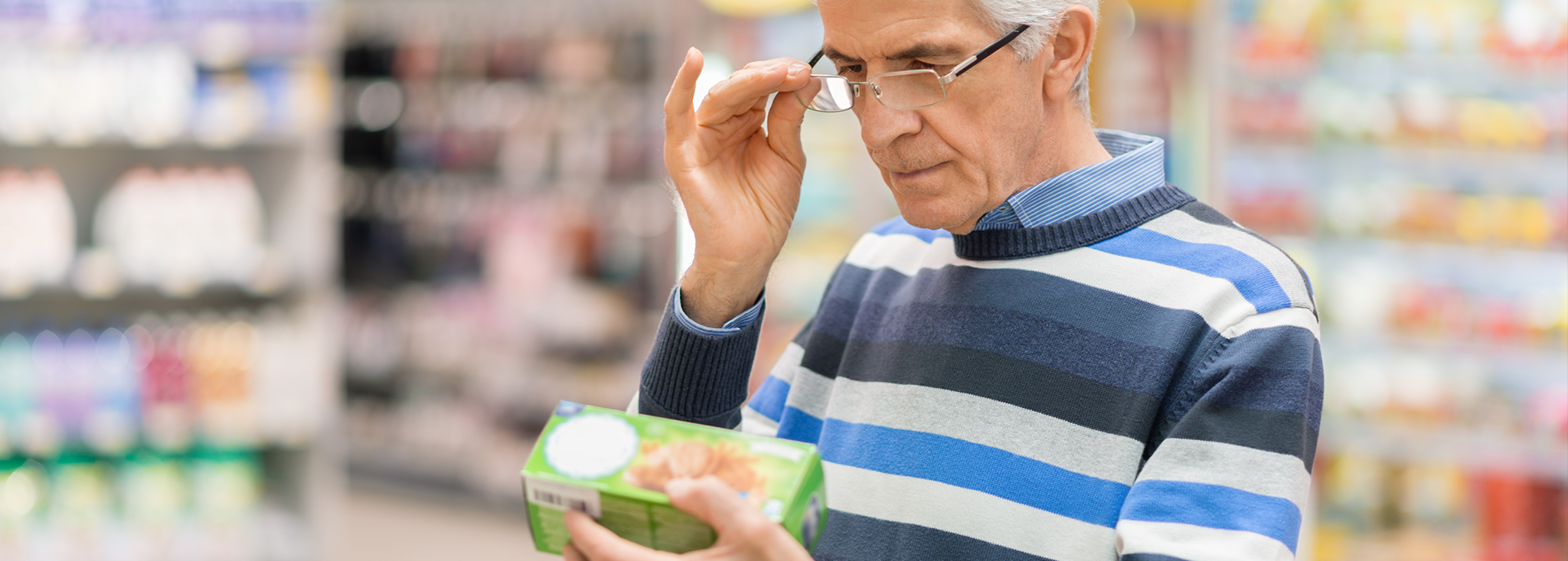How to Read a Food Label
Editor’s Note: This article was originally published on Cooking to a T by T’ara Smith, MS.
Have you ever been in the grocery store, stared at the list of contents on a food label, and were confused by the information? How do you know what’s good or bad for you? Do serving sizes matter? Reading and interpreting the information on a food label can be confusing, especially if you’re trying to maintain or improve your health. But don’t worry, it’s not hard, in fact, learning how to read the info on a label will make you more informed about what you’re eating on a daily basis.
Food labels list everything that makes up the product. This article breaks down what parts of the label to pay attention to, which nutrients eat to more or less of, and what %DV means.
Pay attention to:
Serving Sizes
Serving sizes are listed at the top of the label. When looking at the serving size, pay attention to the amount of servings per container, as it will represent the number of calories, fat, carbs and other nutrients you’ll consume. Whenever you’re deciding on a food product or crafting a recipe, ask yourself how much of that product’s nutrients make up each serving. It’s also important to pay attention to the serving size because what may seem like a “reasonable” serving size for you may be more than the serving size listed on the label. Understanding this can prevent overeating and help you understand if your serving size contains too many carbohydrates that could negatively affect your blood sugar.
Ingredients list
Pay attention to the order in which ingredients are listed. They’re listed in order by weight with the heaviest ingredients listed first, which are the ingredients that make up most of that product. For instance, if you’re looking at a label for balsamic vinaigrette, the first two ingredients would probably be balsamic vinegar and oil. This shows the vinaigrette consists mostly of those two items. However, this is also a way to locate hidden sugars and salts. For example, if you’re looking at a bottle of cranberry juice and the first two ingredients are all-natural cranberry juice and water, but the third ingredient is high fructose corn syrup, this means this bottle of juice has a lot of sugar in it.
Daily Value (%DV)
This handy little symbol is significant on food labels. This represents how much of a key nutrient counts for a 2,000-calorie diet. In other words, a nutrient’s %DV on a label tells you how much that nutrient counts towards your diet for that day. For instance, the amount of sodium in one serving of ketchup could account for 20 percent of the recommended amount of sodium for that day.
Food Claims
Just because a product claims it is fat-fee, sugar-free, or low-sodium doesn’t mean it’s calorie-free. If those nutrients have been reduced, then check which other aspects of the product have been increased in comparison to the regular version of the product. The calories may be higher or the amount of carbohydrates could be higher. Also, you could be missing out on important nutrients of the less-refined product. If a label claims it’s low-fat, then is the sugar content higher compared to its regular counterpart? This applies to sodium and cholesterol, respectively, as well. This tip is helpful because the regular version may actually be healthier for you.
Consume less as of these:
Cholesterol, Sodium, Saturated and Trans Fat
When looking at the fat content in a product, you want to look at the kind of fat it contains. Select more products with monounsaturated or polyunsaturated fat and less products with trans and saturated fat. Saturated fats raise LDL (bad) cholesterol and are found in animal products. They also increase the risks of a heart attack or stroke by increasing blood clotting. Trans fat also raises LDL cholesterol and lowers HDL (good) cholesterol.
Watch out for the amount of sodium because consuming high levels of it can put you at risk for high blood pressure. The American Heart Association recommends that Americans eat no more than 1,500 milligrams of sodium per day. Canned goods, salad dressings and other packaged foods are typically high in sodium. Opt for frozen or fresh vegetables. Try making your own salad dressings and sauces at home, as well.
Consume more of these:
Fiber, Vitamins and Minerals
Foods high in fiber keep you fuller for longer periods of time and help manage cholesterol and blood sugar. Fibrous foods include fruits, vegetables, barley, brown rice and other whole grained foods. You’ll also find some of these foods will also provide the essential vitamins and minerals your body needs such as vitamin D, potassium, iron and calcium.
Understanding the information on food labels is important when making dietary decisions, whether if your goal is weight loss, gain, or managing a chronic illness. This is a major step to learning how to make informed decisions about your diet. It doesn’t have to be hard, but just a little information can make a big difference in your diet and reduce the chances of obesity and other health problems.





